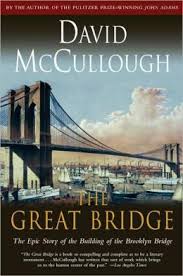Planning Your Family History Book: What’s Your Style?
Biff Barnes
Greetings once again from beautiful downtown Burbank and the Southern California Genealogy Jamboree.
In our last post we looked at the first steps in organizing your family history book: listing ideas you want to include and taking inventory of your existing research to see what your already have and what you still need to gather to write about those ideas. Today we’ll focus on making decisions about the way you want to tell your family stories – the style of your book.
A lot of people believe that it is their duty to presented documented history. I call it the Joe Friday approach, from the old Dragnet TV show “Just the facts.” That’s certainly a legitimate approach. You present the facts about people, places and events, usually organized chronologically. If that works for you – great!

But if you are of a bit more literary bent you may want to consider what historians call narrative history and writers call creative nonfiction. In either case the idea is turn facts into stories and to look deeper into the characters in those stories. A first step is to ask how and why in regard to the events on your list. You use the facts to speculate about what might have motivated people, how they might have felt about what was happening, or what you can deduce about who they were based upon what they did. Pulitzer Prize-winning biographer Stacy Schiff’s recent book, Cleopatra: A Life, is a good example of this speculative approach. At several places in the book Schiff says, We can’t know what Cleopatra was thinking at this point. The admission was then followed by a comment like, these are things that were probably going on in the queen’s head. The author’s deductions add a lot to our understanding of Cleopatra.
You may want to go a step further construction a family narrative with scenes and imagined dialogue. The basis for the dialogue might come from family documents like letters. This may allow you to present some insights into the nature of your ancestors. One need look no further than Frank McCourt’s Angela’s Ashes to see this style of writing at its finest. David McCullough achieves many of the same effects working from strictly historical sources.
There is a line that some memoirists, in particular, have chosen to cross in telling their stories. They have chosen to create composite characters or a wholly imaginative character. Others have created events that didn’t actually occur to improve the flow of their narrative. Many have gotten into trouble. James Frey’s A Million Little Pieces being is a good example of what can happen. The line is one you don’t want to cross. What you write in your family history should be solidly rooted in fact.
Once you decided how you want to tell your story your are ready to develop the outline that will guide you through the process of creating a draft manuscript.We have more on the process of creating your outline in a future post.